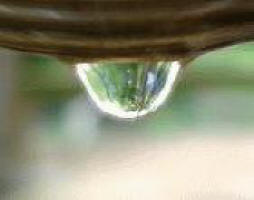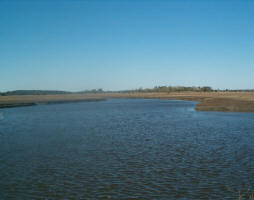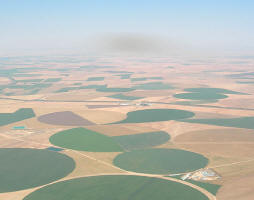 Water apocalypse now on the Nile Daily Star
Water apocalypse now on the Nile Daily Star
Taking advantage of astounding Arab apathy, African countries of the Nile Basin met in the absence of Egypt and Sudan to agree on a plan for sharing the Nile water. Ethiopia, which is the source of 85 percent of the Blue Nile, is only able to utilize a small portion of this water as it crosses its low-laying areas while the bulk of its agricultural activities are on highlands, blessed with abundance of water. Nevertheless, it is demanding the right to construct dams on the Nile for the generation of electricity, to be in turn exported to Europe. What is precarious is the notion of asking for a "fair share" from Nile water with the rights of selling it to other countries. This move was instigated by Israel's offer to buy water from the source countries. Whereas the construction of the hydroelectric dams does not impact the quantity of water flowing to Sudan and Egypt in real terms, offering the Nile water on the market for sale as a commercial commodity would result in an indisputable disaster.
The Nile crosses 10 countries before its downstream reaches the Nile Delta estuary on the Mediterranean. The White Nile originates from Lake Victoria between Kenya and Uganda while the Blue Nile originates from Ethiopia. The two rivers meet in Sudan to merge in one large stream to Egypt. Around 90 percent of Nile water currently reaches Sudan and Egypt, which both have been given the right to veto any projects for the construction of dams or alteration of water use in upstream areas, through an agreement that was signed in 1929. The countries that have met in Uganda have decided to establish a new joint authority for the management of the Nile, based on new guidelines.
On another front, both Iraq and Syria are subject to a drastic water deficit, due to sharp reductions in the flow from Turkey, where the Tigris and Euphrates originate. In Jordan and the Occupied Palestinian Territories, water scarcity has reached dangerous levels, after Israel strengthened its grip on the Jordan River waters and stole a major portion of groundwater resources. Lebanon is losing its water due to mismanagement, pollution or simply wasting it in the sea.
We do not have to wait for the implications of the Uganda agreements nor the impacts of climate change as Arabs are already in the heart of the water catastrophe. Official figures have until recently estimated the per-capita share of water in Egypt to be 750-cubic meters per year in 2010, based on the assumption that the Nile flow is 55 billion-cubic meters. The amount of water actually reaching Egypt today does not exceed 44-billion cubic meters, reducing per-capita share to no more than 600-cubic meters annually, 20 per cent lower than the official figure.
The most recent water reports indicate that three Arab countries are the poorest in water availability in the world amongst 180 countries. In the list of the 19 water-poorest, there are 13 Arab countries. In four Arab countries the per-capita share is below 100-cubic meters - Kuwait, UAE, Qatar and Palestine - while in four other countries the figure is below 200-cubic meters - Libya, Saudi Arabia, Bahrain and Jordan. There are five Arab countries with per-capita share less than 500-cubic meters - Yemen, Djibouti, Oman, Algeria and Tunisia - while Egypt, Lebanon and Syria are on the boundary of water scarcity with less than 1,000-cubic meters per capita. The only two Arab countries that still pass the water stress line are Iraq and Sudan, at more than 1,000-cubic meters per capita.
In the annual report published by the Arab Forum for Environment and Development (AFED) in 2008, we predicted, based on figures available then, that 2025 will be the ominous date when the average per-capita share in the Arab region will drop below 500-cubic meters annually, which is termed as severe water scarcity. The figures we are handling now and the conclusions reached so far by researchers working on the latest report to be published by AFED in November 2010, clearly indicate that we are in the heart of a water catastrophe and we will not have to wait for 2025 or the implications of the Uganda meeting about sharing the Nile.
Why is it considered that any allocation that is below 1,000-cubic meters per capita is water scarcity, while below 500-cubic meters is severe scarcity? Let us take notice that a cup of coffee of 200 milliliters requires 140 liters of water to produce the spoon of coffee to make it. One apple requires 70 liters while 1 kilogram of wheat needs 1,300 liters. One kilogram of beef requires 15,000 liters, and a pair of jeans will exploit 11,000 liters of water to irrigate the cotton to make it.
Arabs cannot afford to lose a single drop of water. Governments should immediately implement sustainable water management policies, adopt water efficiency measures, shift from irrigation by flooding to drip irrigation, develop crops resilient to salinity and requiring less water, recycle and reuse wastewater, and develop affordable technologies for sea water desalination.
Any delay in a serious response to the water challenge corresponds to mass suicide. The water apocalypse is knocking on Arab doors, right now.
--
Najib Saab is secretary general of AFED and is the editor in chief of Al-Bia Wal-Tanmia. Saab is a regular contributor to The Daily Star. www.najibsaab.com
| Contact information |
Najib Saab is secretary general of AFED and is the editor in chief of Al-Bia Wal-Tanmia. Saab is a regular contributor to The Daily Star. www.najibsaab.com Read more: http://www.dailystar.com.lb/article.asp?edition_id=10&categ_id=3&article_id=115857#ixzz0rTxfB7Lj (The Daily Star :: Lebanon News :: http://www.dailystar.com.lb)
(email: nsaab@afedonline.org) |
|---|---|
| News type | Inbrief |
| File link |
http://mideastenvironment.apps01.yorku.ca/?p=693 |
| Source of information | Daily Star |
| Subject(s) | AGRICULTURE , DRINKING WATER , DRINKING WATER AND SANITATION : COMMON PROCESSES OF PURIFICATION AND TREATMENT , ENERGY , HYDRAULICS - HYDROLOGY , INFRASTRUCTURES , NATURAL MEDIUM , POLICY-WATER POLICY AND WATER MANAGEMENT , PREVENTION AND NUISANCES POLLUTION , RIGHT , RISKS AND CLIMATOLOGY , WATER DEMAND , WATER QUALITY |
| Geographical coverage | Iraq, Syria, Egypt, Sudan, Jordan, Palestine, Lebanon |
| News date | 21/06/2010 |
| Working language(s) | ENGLISH |
 you are not logged in
you are not logged in





